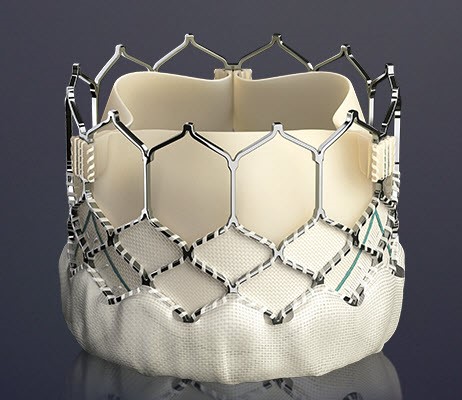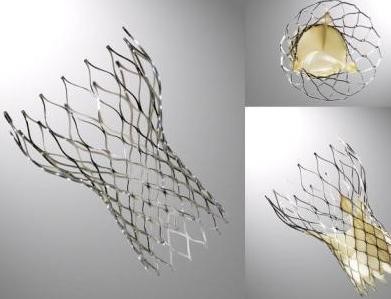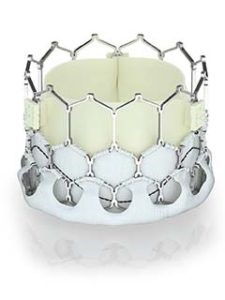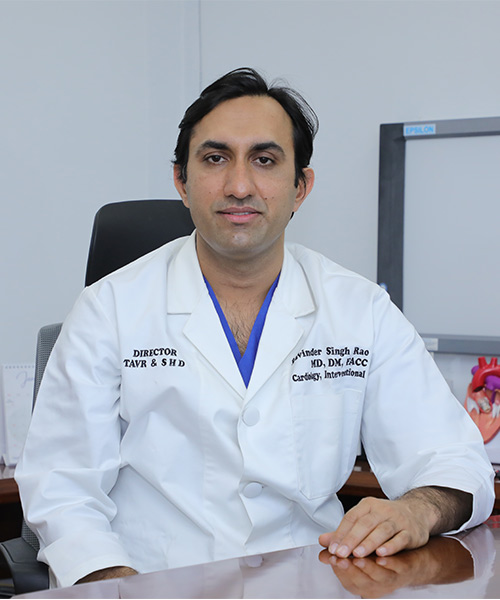TAVR/TAVI - Center of Excellence

What is transcatheter valve replacement?
Transcatheter aortic valve replacement (TAVR/TAVI/TAVI) is a treatment option for some patients with severe aortic stenosis (narrowing of the aortic valve opening).
Who can have TAVR/TAVI?
If you have been diagnosed with severe aortic stenosis and your doctor has evaluated the same, TAVR/TAVI may be a better alternative for you. However only a specialized Heart Team can determine which treatment option is best for you.
Your doctor would need to evaluate and plan for your TAVR/TAVI case by conducting few medical and clinical tests. You could be admitted to a hospital for carrying out these tests or you can get these tests done as an outpatient. If the tests confirm that you can go for TAVR/TAVI, the doctors will give you a definite time for getting this procedure done at the hospital.
The process for TAVR/TAVI evaluation includes 3 steps:
Sending in records for review by the RHL Heart Team
Heart TAVR/TAVI procedure eligible patients have to go series of tests at RHL Heart Centre. TAVR/TAVI is less invasive than traditional surgery. Team will council you about the details of procedure.
Cardiologists will review of your medical records, test results and other information about your health.
Why choose RHL Heart Center for your care?
Protected TAVI program at RHL Heart center runs under leadership of Dr Ravindra Singh Rao, Chairman, RHL Heart Centre. Dr Rao is expert in TAVR/TAVI and Structural Heart Disease therapies. He has done the highest TAVR/TAVI procedure in India and in south-east Asia with safest outcome. Our outcomes speak for themselves. Please review our facts and figures, and if you have any questions, don't hesitate to ask
What happens during the procedure?
Your aortic valve will be replaced with a valve made from animal tissue (biological). The tissue is supported with a metal frame. Despite the metal frame, having the valve will not require you to take blood thinners. But, if you are already taking a blood thinner, you will need to keep taking it.
- The area is numbed, and either a local anaesthetic with sedation or a general anaesthetic is given. This will be discussed with you prior to your procedure
- A balloon catheter is inserted into an artery in either your groin or underneath your collarbone
- The balloon catheter is guided into your heart and positioned within the opening of the bicuspid aortic valve
- The doctor gently inflates the balloon to open up the valve
- The doctor implants a new aortic valve using metal mesh tube which keeps the valve in place - the new valve either expands by itself or is expanded using the balloon, depending on the type of valve used
- The new valve is positioned to push aside your damaged aortic valve
- The balloon is deflated and your doctor removes the balloon catheter
What are the types of TAVR/TAVI approaches?
There are several ways to implant the new valve. Your doctor will decide which approach is the best for you and may mention approaches other than those described below.
TAVR/TAVI heart procedure can be performed in different ways depending on each individual’s anatomy.
Some approaches include:
- The transfemoral approach (the most common approach and is through an incision in the leg).
- The subclavian approach (through an incision near the shoulder).
- The transapical approach (through an incision in the chest between the ribs).
- The transaortic approach (through an incision in the upper chest).

What are the types of TAVR/TAVI valves?
The Medtronic TAVI Valve and Edwards TAVI SAPIEN are the most commonly used TAVR/TAVI prosthetic valves.
The Edwards SAPIEN Valves – Sapien 3

Evolut R and Evolut Pro

MYVAL

Cerebral Protection
To help prevent cerebrovascular events (stroke), a potential risk during TAVR/TAVI surgery, the RHL Heart Centre team uses the Sentinel Cerebral Protection System in appropriately selected patients.
Valve in Valve TAVR/TAVI
Patients who had SAVR or surgical mitral valve replacement may develop valve degeneration 10 to 20 years after surgery can opt for “valve- in- valve” (ViV) procedure. A valve-in-valve TAVR procedure involves placing the new valve (aortic or mitral) into the old one using a transcatheter approach. You may be able to have a valve-in-valve procedure if:
- Your old valve was replaced with a prior bioprosthetic valve
- Your old valve opening is the right size to support a transcatheter valve
- You are considered high risk for traditional heart surgery
- You don’t have other valve conditions that would be best corrected with traditional heat surgery
- How long does the procedure take?
- It will take about an hour to get you ready for the actual procedure. The procedure itself takes about an hour
What happens after the procedure?
TAVR/TAVI patients can go home within 3 days of procedure.
Follow-up care
It is very important to make sure you follow-up with your doctor after the TAVR/TAVI heart procedure. You will need to visit your cardiologist one week after the procedure and have an echo and a visit within one month of the procedure. You will need another appointment with your cardiologist 6 months after the procedure, and at 1 year after you get your new TAVR valve.
Don’t Worry, Have A Safe TAVI
Dr Ravinder Singh Rao
Chairman, RHL Heart Centre
Head - Complex Angioplasty - TAVI Program
Monday - Saturday
9:00Am to 5:00Pm







